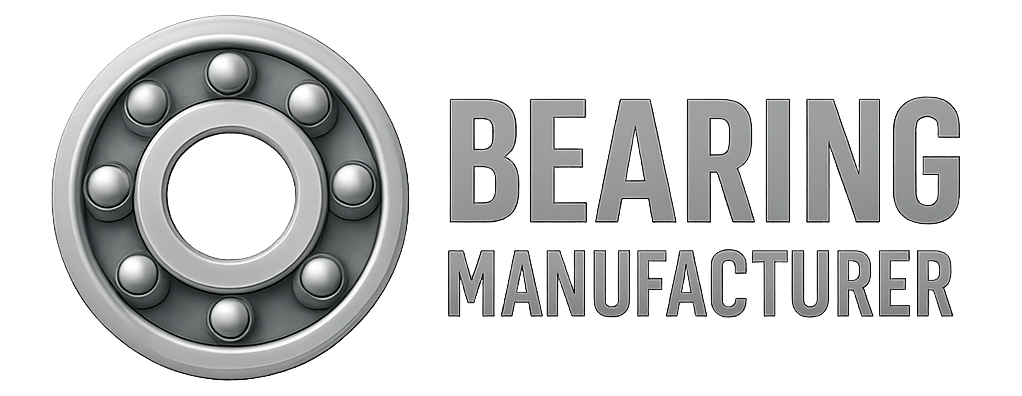Bearings are fundamental components in industrial machinery, reducing friction and supporting rotational movement. When selecting bearings, one crucial decision is choosing between shielded and sealed types. Each offers unique performance characteristics, and selecting the wrong type can reduce equipment lifespan or increase maintenance costs.
This article explains the key differences between shielded and sealed bearings, compares their advantages and limitations, and provides guidance for choosing the right type based on your application conditions.
What Are Shielded Bearings?
Shielded bearings use metal shields on one or both sides to prevent large debris from entering the bearing. These shields are non-contact, meaning they do not touch the inner ring, which results in lower friction and reduced starting torque.
Types of Shielded Bearings
-
Standard Shielded Bearings (often labeled “ZZ”): Feature a metal cover stamped onto the outer ring.
-
Shielded Bearings with Snap Ring (ZZNR): Include a built-in snap ring, allowing easy axial positioning in housings—especially valuable in compact designs like miniature bearings or thin-section bearings.
Advantages of Shielded Bearings
-
Lower Friction & Running Torque: Ideal for high-speed applications.
-
Cost-Effective: Generally cheaper than sealed bearings.
-
Higher Temperature Resistance: Standard shielded bearings can tolerate temperatures up to 250°C, far exceeding the 120–180°C range of typical rubber-sealed bearings.
Limitations of Shielded Bearings
-
Partial Protection Only: Cannot block fine dust or liquid ingress.
-
No Moisture Barrier: Susceptible to corrosion in humid or wet environments.
-
Shorter Life in Harsh Conditions: Exposure to contaminants may reduce bearing life.
✅ Best For: Clean environments with regular maintenance access, such as electric motors or fans.
What Are Sealed Bearings?
Sealed bearings are equipped with contact or non-contact rubber seals on one or both sides. These seals form a tighter barrier than shields, offering superior protection against dust, dirt, and moisture. They are often pre-lubricated and maintenance-free for life.
Common Seal Types and Characteristics
| Seal Type | Contact | Protection Level | Friction | Suitable Environment |
|---|---|---|---|---|
| LLB | Non-contact | Good dust protection | Very low | High-speed, clean settings |
| LLU | Contact | Excellent dust & water resistance | Medium | Contaminated, moist environments |
| LLH | Light-contact | Balanced speed & sealing | Low | High-speed with moderate dust |
| LLE | Contact (3-lip) | High water resistance | Medium | Frequent water/fluid exposure |
| LLU-X | Contact | Highest sealing performance | Medium | Harsh, high-contamination areas |
🔍 Note: Most sealed bearings operate reliably between -25°C and 110–120°C, depending on the seal material.
Advantages of Sealed Bearings
-
Enhanced Contamination Protection: Keeps out small particles and fluids.
-
Lubrication Retention: Extends bearing life and minimizes re-lubrication.
-
Maintenance-Free Operation: Ideal for inaccessible or sealed systems.
Limitations of Sealed Bearings
-
Higher Friction: Contact seals increase starting and running torque.
-
Lower Speed Limits: Not suited for ultra-high-speed applications.
-
Potential Heat Buildup: Friction from seals may increase internal temperature.
✅ Best For: Dirty, humid, or hard-to-access applications—such as conveyors, pumps, or food-grade equipment.
Shielded vs Sealed Bearings: Key Differences at a Glance
| Feature | Shielded Bearings | Sealed Bearings |
|---|---|---|
| Seal Type | Metal shield (non-contact) | Rubber seal (contact or non-contact) |
| Protection | Basic (large particles only) | Advanced (dust, moisture, fluids) |
| Friction | Low | Medium to high |
| Speed Capability | Higher | Lower |
| Lubrication | Moderate retention | Excellent retention |
| Temperature Resistance | Up to 250°C | Up to 120°C |
| Maintenance | May need regular servicing | Often maintenance-free |
How to Choose Between Shielded and Sealed Bearings
When selecting between shielded and sealed bearings, consider these key factors:
-
Operating Environment:
-
Clean and dry? → Shielded bearings are sufficient.
-
Dusty, wet, or corrosive? → Choose sealed bearings.
-
-
Speed Requirements:
-
High-speed applications favor shielded bearings for their lower torque.
-
Medium to low-speed applications can tolerate the friction of sealed bearings.
-
-
Maintenance Access:
-
If regular lubrication is possible, shielded bearings can be maintained.
-
In hard-to-reach systems, sealed bearings reduce service needs.
-
-
Temperature Conditions:
-
High heat (>180°C)? → Shielded bearings are better.
-
Sealed bearings are suitable within their thermal limits.
-
-
Industry Compliance:
-
Sealed bearings are often required in food, beverage, or cleanroom industries due to hygiene standards.
-
Conclusion
Both shielded and sealed bearings serve critical roles across various industries. The right choice depends on the balance between protection, speed, maintenance needs, and environmental conditions. By understanding the differences and evaluating your application requirements, you can maximize bearing life, reduce downtime, and improve operational efficiency.
